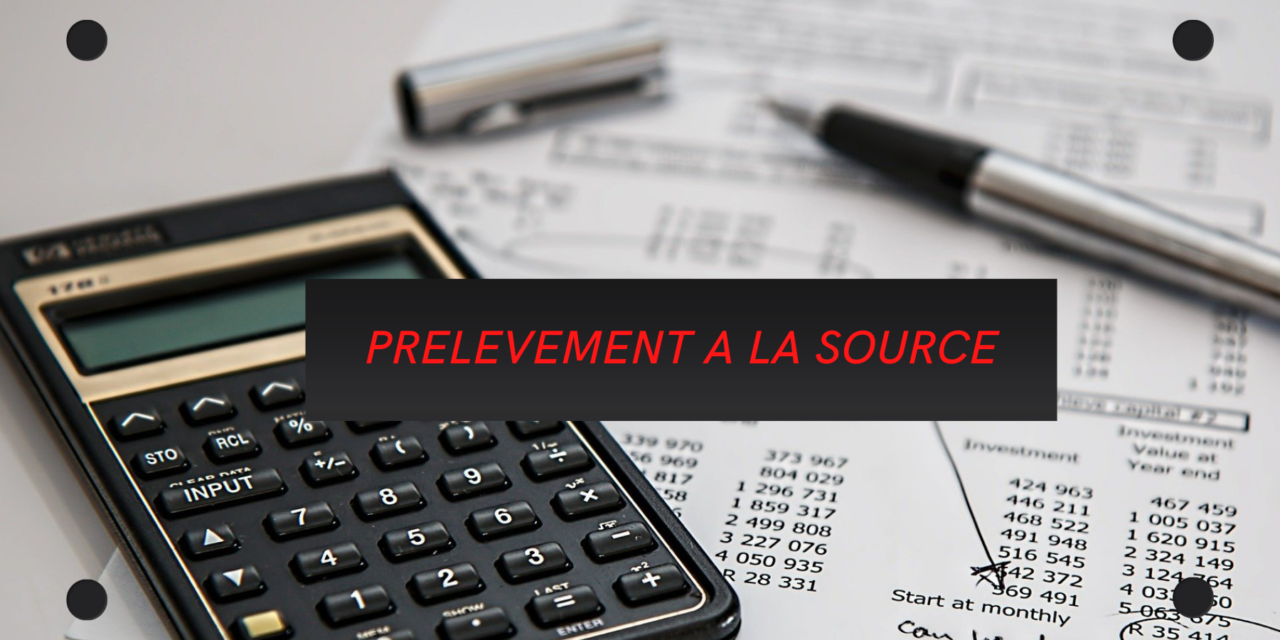The entry into force of the deduction at source of income tax has existed in France since 1er January 2019. But it is true that, sometimes, it is a bit complex to find your way around in the calculation. In this article, therefore, we will try to understand how it all works, trying to be as simple as possible.
First of all, what does not change
In May, like every year, you will have to file your income tax return using the government website's internet portal. You will therefore declare all your income for the previous year, but also certain expenses. Here are some examples :
- Wages
- The income of the self-employed
- Real estate income
- tax revenue
- Retirees
- The salary of your child's nanny, your housekeeper, your home help
Of course, this list is not exhaustive.
The changing elements
If you are employed, retired or self-employed, you will no longer pay the tax directly. It is your employer or your pension fund, for example, who will deduct a sum each month from your salary or your pension, and will then pay it directly to taxes. These deductions are made every month, which allows you to spread out the payment of the sums due for income tax over the year. For the self-employed, income tax will be deducted when you declare your turnover, that is to say every month or every quarter.
When you file your return each year, the tax authorities will determine a rate based on your tax return for the previous year. Of course, you can modify this rate at any time if you estimate that you earn much less or more than the previous year. This rate is then directly transmitted (by taxes) to your employer (or your pension fund or Pôle Emploi, etc.).
The employee obviously gives no information. It is the tax administration that takes care of it and is content to simply give a rate. Under no circumstances does your employer know your other income, if you benefit from it. There is total confidentiality. The intentional disclosure of the rate by the employer is also punishable.
But, if you prefer, you can also opt for a non-personalized rate. It is quite possible!
It should be noted that some income does not fall within the scope of the withholding tax, such as capital income or capital gains on life insurance.
How to calculate the withholding tax rate
The calculation methods are complex and it is more prudent to rely on a simulator to obtain the most accurate result possible.
However, we can sum it up like this:
The amount of income tax is divided by the amount of income.
Finally, this personalized rate will then be revised on the 1er September of each year according to your declaration and this logic will then be applicable each year.
The specific case of cross-border workers with Switzerland
If you are a non-resident cross-border worker and you work in the canton of Geneva or Zurich, for example, which already apply this withholding tax, you are not concerned.
On the other hand, if you work in Switzerland and your tax residence is in France, you will have to pay installments directly to the Tax Administration as you did before.
As a retiree in France, withholding tax will normally apply.
And if the Tax Administration has made an overpayment ?
The withholding tax rate is calculated proportionally to the level of income. As we have seen previously, if your situation changes, you have the possibility of modifying this rate online and modulating it. The Administration will then make the corrections within 3 months. The tax refund is automatic thanks to the declarations made each May. It is at the end of July or the beginning of August that you will be reimbursed. During this period, you will also receive your tax notice.
For short contracts
Fixed-term contracts and temporary contracts are also subject to withholding tax. The employer can use a default scale in the absence of transmission of the rate. It can also be called neutral rate or non-personalized rate. A scale is at your disposal:
Here too, you have the possibility of modifying it online on the tax site.
You have multiple employers
Withholding tax works the same way. Indeed, the Tax Administration will give the same rate to each of them and this rate will be applied to each salary.
The Tax Administration remains your sole contact
If you have any questions, if you want to change your personal situation, you should only contact your usual tax office. Your employer just collects the sum and does not replace the Administration.
Donations
When you donate to an association, you are entitled to a tax reduction of 66% of your donation. With the deduction at source, this does not change anything. You declare it each year, in May, and this amount will be deducted from your final tax notice in September.
Calculations
The monthly direct debit amount is as follows:
- Your net taxable income is multiplied by the applicable rate
If you choose the neutral rate, then the following table will be used:
| Salary | Neutral rate |
| Less than or equal to €1 | 0% |
| From €1 to €404 | 0,50% |
| From €1 to €457 | 1,50% |
| From €1 to €551 | 2% |
| From €1 to €656 | 3,50% |
| From €1 to €769 | 4,50% |
| From €1 to €864 | 6% |
| From €1 to €988 | 7,50% |
| From €2 to €578 | 9% |
| From €2 to €797 | 10,50% |
| From €3 to €067 | 12% |
| From €3 to €452 | 14% |
| From €4 to €029 | 16% |
| From €4 to €830 | 18% |
| From €6 to €043 | 20% |
| From €7 to €780 | 24% |
| From €10 to €562 | 28% |
| From €14 to €795 | 33% |
| From €22 to €620 | 38% |
| From €47 | 43% |




